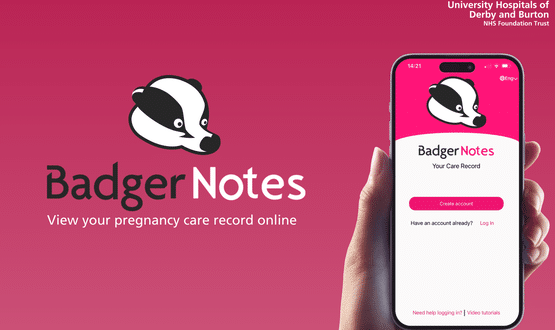Yorkshire and Humber SHA plan TPP-based EPR
- 17 October 2007
 Yorkshire and Humber Strategic Health Authority has adopted a new IM&T strategy that explicitly plans for the possible non-delivery of Lorenzo, the strategic software the NHS IT programme is meant to provide to three-fifths of the NHS.
Yorkshire and Humber Strategic Health Authority has adopted a new IM&T strategy that explicitly plans for the possible non-delivery of Lorenzo, the strategic software the NHS IT programme is meant to provide to three-fifths of the NHS.
Instead, the SHA now plans to base its delivery of electronic patient records on a primary and community care record system supplied by The Phoenix Partnership (TPP). Under the plan acute systems would be connected to a TPP core electronic record.
E-Health Insider has learned that Yorkshire and Humber SHA is pushing its primary care trusts to adopt TPP’s SystmOne software as the foundation for shared electronic records. As well as providing an alternative should Lorenzo fail to be delivered, or be further “descoped”, the approach should enable the SHA avoid having to pay penalties to local service provider Computer Sciences Corporation (CSC), under the contracts it was committed to by central NHS IT agency, Connecting for Health (CfH).
Yorkshire and Humber SHA says the mass-migration to the TPP route offers a way to achieve the benefits of shared electronic records to deliver better healthcare, while avoiding the SHA becoming liable for penalty payments to local service provider CSC.
The SHA says its plan mitigates the risk of further delays in the delivery of the Lorenzo system to be supplied by CSC, already running three years late. Each SHA has been committed by CfH to take a certain number of implementations from the LSP or pay penalties, irrespective of whether the Lorenzo software is available.
EHI understands that although Yorkshire and Humber has so far been the most explicit about its preference for the TPP-option other SHAs in the North of England are also developing similar strategies.
Although potentially offering a pragmatic route to electronic records using off-the-shelf software the Yorkshire and Humber strategy runs counter to the government’s commitment to GP Systems of Choice. Instead it is predicated on the SHA forcing a mass migration of all its practices and PCTs to TPP.
As part of the strategy the SHA intends to treble the number of further GP practices migrated to TPP SystmOne – from the 100 it is contractually committed to by the end of 2008/2009 to over 300. The aim would be to move 100% of PCTs onto TPP by the end of 2009.
In addition, by over-delivering on the contract, Yorkshire and Humber’s additional 200 installs would be used to offset the implementation deficits in other SHAs covered CSC, specifically in the North West and West Midlands.
Yorkshire and Humber SHA document states: “TPP could therefore form the basis of an electronic patient record. Our target would be to have deployed the TPP system to 50% of GPs, 75% of PCTs and 100% of prisons in Yorkshire and the Humber by March 2008 and 70% of GPs and 100% of PCTs by March 2009.”
Individual SHA’s contracted commitments to take a set number of systems – or find an SHA willing to make good the shortfall – applies despite the continued delays in the availability of Lorenzo. Instead deploying TPP SystmOne to hundreds more sites is being seen as a ‘get out of jail free’ card, offering a way for SHAs to avoid penalties, while also enabling CSC to get paid under the CfH-negotiated contract.
The document also stresses that one of the key objectives, and part of the rationale of the TPP route, is to avoid incurring penalties to the LSP.
It says the TPP-based strategy “Ensures that the SHA delivers the NHS’s contractual commitments and thereby mitigates the risk of contractual default and the application of penalties.” The level of these penalties is not specified.
Because TPP is the current system GP and community system offered by CSC, the LSP would earn money from further implementations and the SHA could avoid contractual penalties. “All of the deployments planned under the strategy are still NPfIT deployments and therefore count towards the delivery of the programme by the SHA,” explains the Yorkshire and Humber paper.
A September board paper from Yorkshire and Humber says “By accelerating the deployment of the primary and secondary care system the SHA will actually over-deliver on the NHS’s contractual commitments in Yorkshire and Humber both this year and next.”
This contrasts with the position in the North West and West Midlands, which has a “significant gap in its contractual commitments.” Yorkshire and Humber says it is being asked “to help them by over-delivering on our contract.”
Setting out the benefits of the strategy the SHA document says: “It expedites the delivery of the National Programme for IT in Yorkshire and the Humber”. In addition, it says the plan will “mitigate the risk of further delay to, or non-delivery of, the strategic solution (Lorenzo) from CSC”.
“In the event of delay to, non-delivery of or a change of scope of Lorenzo we would seek to link the secondary care systems to the TPP systems,” says the IM&T strategy document. “This would effectively create a Yorkshire and Humber-wide electronic patient record enabling us to achieve the vision of a shared clinical record.”
If, however, Lorenzo is delivered the strategy argues that the drive to TPP would provide a helpful enabling step. “If Lorenzo is delivered then migrating existing users from standardised hosted systems such as TPP will be easier than trying to migrate them off a plethora of different systems as is the case today. Therefore at worst this is an enabling strategy.”
In the continuing absence of Lorenzo the SHA says that CSC’s product set for secondary care “is a package of separate software applications” – iPM patient administration system (PAS), iCM clinical management system for orders and reports, departmental systems (theatres, maternity and A&E), and integration solution and a management information system.
The strategy says that only one acute trust covered by the SHA, Bradford Teaching Hospitals NHS Trust, has yet received a secondary care product from CSC, the iPM PAS, plus integration and management information. It concludes though this has been successful but adds: “The system is still bedding in and it therefore too early to tell whether this would form a suitable platform for other trusts.”
Neither Yorkshire and Humber SHA or CSC had responded to questions put by EHI at the time of publication.
Jon Hoeksma




